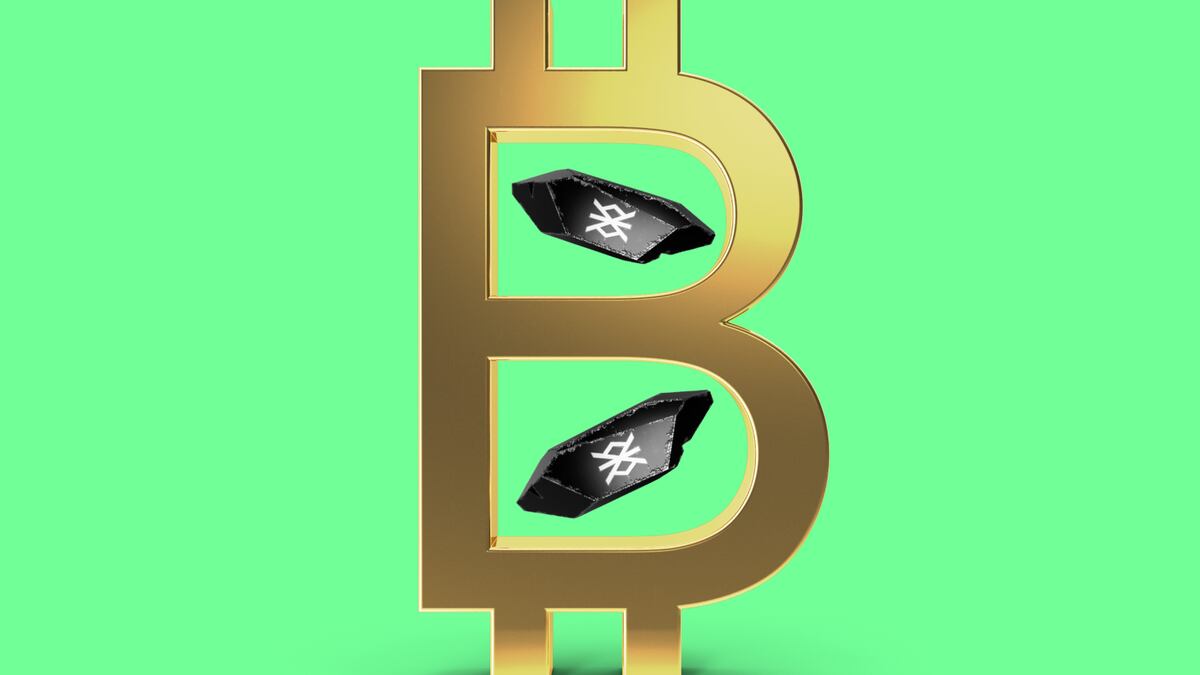- The Runes upgrade is expected to go live alongside the Bitcoin halving.
- Runes will bring more efficiency and capabilities for tokens built on the original blockchain network.
- Already, traders are pouring into Bitcoin projects ahead of the launch.
Crypto’s proverbial digital rock is getting a major upgrade meant to greatly boost the use of memecoins on the Bitcoin network.
And as Bitcoin hurdles toward its fourth halving, that upgrade is slated for the same time.
Called Runes, it’s expected to formalise how inscriptions — essentially Bitcoin NFTs — and tokens are traded and minted.
Launching and speculating on a memecoin or NFT on Bitcoin is currently quite a clunky experience for developers and investors.
Still, that hasn’t stopped users.
Ordinals Inscriptions, the first real experiment to make Bitcoin a token launchpad, has already generated more than $415 million in transaction fees since 2022.
Casey Rodarmor, the Ordinals creator, is hoping to tap into that new demand, and increase it, with Runes.
But what is the Runes protocol, and how does it work?
Bitcoin tokens, but faster
At the core of Runes is the use of Bitcoin’s UTXO — Unspent Transaction Outputs — model.
In this model, each transaction starts by identifying Bitcoin fragments that have not been spent — akin to gathering digital spare change — and uses these to create new transactions.
Runes stores data in the OP_RETURN field in Bitcoin transactions. Imagine scribbling a note on a physical currency note to later identify it; OP_RETURN serves a similar purpose but in digital form.
This method of data storage doesn’t change the transaction’s value but allows the addition of metadata to transactions without cluttering the network with unnecessary data.
This keeps the network efficient, reducing latency and transaction costs, which is particularly beneficial for a network like Bitcoin.
These changes are a major upgrade, as Brian Rudick, senior strategist at crypto market maker GSR, told DL News.
“Personally, I do think there is a real possibility of Runes becoming the de facto fungible token standard on Bitcoin, since its UTXO-based, maintains all transactional data onchain, and has a smaller onchain footprint.”
The most important takeaway from the upgrade is that it imbues Bitcoin with far more utility.
Pigeonholed as a digital gold meant for HODLing rather than for spending or launching memecoins, Bitcoin with Runes look a lot more like layer 1 blockchains that let users trade tokens.
Preparing for Runes
Going into the upgrade, demand for Bitcoin NFTs is already high.
According to data from nftpulse, an NFT analytics site, Bitcoin NFTs have led all blockchains in terms of trading volume and active traders in the last 30 days.
Runestone is one such project, beginning with an airdrop to more than 112,000 users who held at least three non-text Ordinals in their Bitcoin wallet. The value of the airdrop was estimated to be some $300 million, with over $215 million in volume on NFT marketplaces.
Following the Runes upgrade, Runestone holders are expected to receive airdrops from three different Runes memecoin projects.
The first airdrop, named DOG, is expected to drop later this month, while the other two memecoins are expected to airdrop later in the year.
On the other hand, existing BRC-20 — the current standard for tokens built on Bitcoin — projects are faced with a decision: Stick with BRC-20 or switch to the Runes standard. Many have already announced plans to adopt the new standard.
PUPS, a memecoin airdropped to Bitcoin Puppet holders and O.P.I.U.M holders, have already signaled they will be switching to Runes.
PUPS is the third-largest BRC-20, rising over 1,226% in the last 30 days, trading at a $462 million market capitalisation.
WZRD, another memecoin that’s signaled it will move to the new Runes standard, is up 257% in the last seven days.
Ryan Celaj is a data correspondent at DL News. Got a tip? Email him at ryan@dlnews.com.
